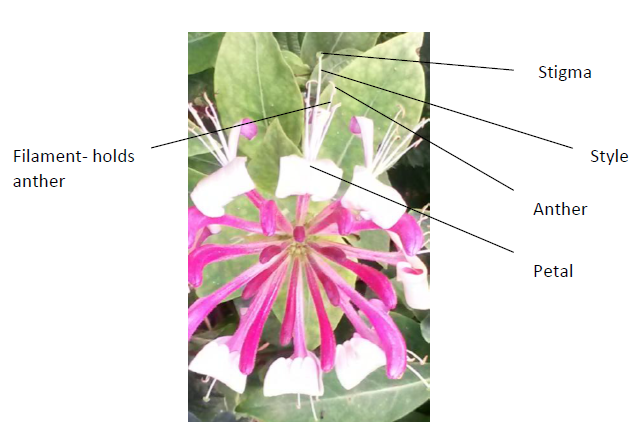  |
|||||||||||||
| Home | Biology | Chemistry | Physics | 11-14 Science | Learning with social media | RIFI Rewards | Link up with us | ||||||
What you need to know |
Reflections and Exam tips |
||||||||||||
Plant reproductionPlants reproduce sexually using flowers. In most plants, the flower contains both male and female reperoductive organs. The male reproductive organs are mainly the anthers which produce pollen (the male sex cells} The female organs are the carpels, which consist of the top Stigma, style and the ovary at the bottom. The ovary contains ovules, which are the eggs (female sex cells) Most flowers are surrounded by scented and colourful petals which help attract insects for pollination.
Pollination Pollination is the transfer of pollen from the anthers to the stigma. When the pollen grain land on the stigma, a pollen tube develops which carries the pollen nucleus through the style to the ovary. In the ovary, the pollen nucleus fertilises the ovule (joins with the nucleus of the ovule). Once this happens, the ovule develops into a seed. The ovary swells up to become a fruit. Most flowers are adapted for wind or insect polination. Wind pollinated v Insect pollinated flowers
The importance of insects in polination Pollination results in the formation of seeds. Most of our food comes from plant seeds e.g. Wheat- The wheat seeds are used to make bread, pasta, beer etc. We also eat a lot of fruits (plant ovaries) which are a result of pollination of flowers by bees and other insects e.g. apples, mangoes, oranges, tomatoes Without insects, we would run out of food. It is therefore important to conserve the insects and avoid using chemicals that may kill them. Seed dispersal Most plants produce a lot of seeds each year. If these seeds were to grwo under the parent plant, there would be competition for:
This would limit the chances of survival of each plant. To prevent this, plant seeds are dispersed (spread) far away from the parent plant. This also helps the plant to occupy new territory and encourages evolution. Plants have adapted various dispersal mechanisms like:
Look at the pictures below and decide which dispersal mechanism each is adapted for.
|
Why do some apple farmers keep bees in their farms? | ||||||||||||
